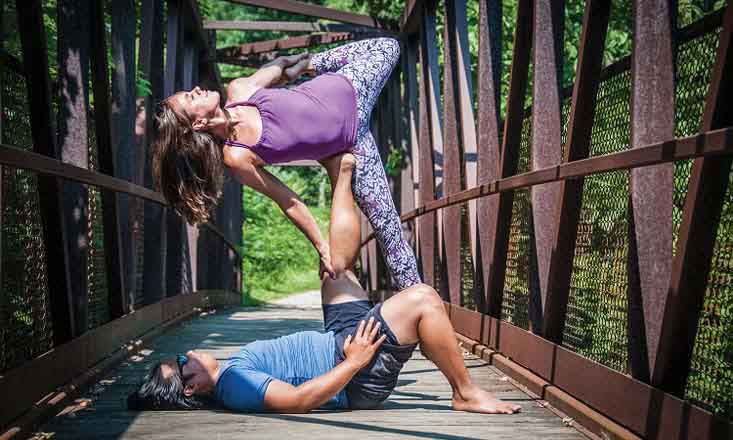You are constantly invited to be what you are. ~Ralph Waldo Emmerson
Emotional intimacy is the ultimate in trust, honesty, and communication in relationships. It is an exchange of knowing each other at the deepest level possible.
For example, early in my relationships I was afraid people wouldn’t like me. I held all my needs in and would sit silent while the person conversing was hurt by my closed off reaction. In truth, people did like me, but I often pushed them away from an authentic relationship.
Throughout my adult life I’ve unlearned what I thought emotional intimacy was and relearned it.
Taking the time to unlearn harmful emotional habits—may it be fear of speaking one’s needs, feeling unloved, or feeling like less than enough—and relearning how to healthfully reveal the self and embody it is a venture worth taking.
The journey may include pain, release, and denial, though with it comes joy, acceptance, support, trust, and love. There is always time to take responsibility and create fluency in emotional intimacy in one’s life! Here are some life-changing lessons I've learned along the way.
Lesson #1: Do the inner work…Knowing the self is always the first step.
It’s important! Humans are interesting and complex beings. Rarely are we boring. To expect others to share their authentic feelings and needs, it’s essential to have that skill as well.
Developing a daily practice for building self-awareness allows this inner work and growth to happen. Ask questions like, “What am I doing?” “How can I flow gracefully?” “What do I like and/or not like?” Be radically honest. Track what comes up and pay attention to it.
Lesson #2: Connect with the natural environment, the self, and others.
Using yoga, walks in nature, and slackline yoga (yoga on a 1-inch piece of webbing that is a cross between a trampoline and a tightrope tied to two anchor points) are all self-reflection practices that track sensations to unite with what is going on in the physical body.
Practice noticing sensations when situations occur in your daily natural environment or with others, and notice the body’s response. Then, connect what emotion arises to that sensation. Watching the reaction that comes from that emotion is extremely insightful.
For example, in any relationship, when miscommunication arises I feel intensity in my heart and stomach and heat building. I am able to track those sensations to frustration because of my slackline practice, and understand that the same reaction occurs when I’m having a tough time and keep falling.
By identifying my emotion instead of becoming it, freedom occurs. This is your life—there is the choice to tell and live your story as desired. Often, the best way to be with someone is to be with one's self first.
Lesson #3: Have regular communication check-ins.
Having a regular check-in with someone is a great way to build trust around what is going on in each other’s lives. It offers a place to be heard and to be truthful (with no judgment). It also gives space to be supported and validated.
Sometimes, we need someone to tell us why we are struggling or to recognize when we shine. For example, sharing a practice with another individual encourages deep connection and authentic communication.
I’ve shared a partner acrobatic yoga practice (a practice of two or more people, one person as the base, supporting another as the flyer in postures and sequences with the purpose of a deeper connection with one another) with my fiancé for three years.
Although we've had prior experience with this practice, it was necessary to approach it as beginners and pay attention to what was happening with our individual thoughts and emotions. Then, we began to communicate our needs like adults in a mature, kind way.
Regularly checking in with someone else helps you communicate personal stuff and tell each other what observations in the other person are revealed when it comes to growth and challenges. It allows relationships to flourish and develops trust in multiple aspects of life.
Lesson #4: Trust one’s self and one another.
At times, circumstances in life manifest from a place of power and position on an external level, making you feel like there is no control over it. It tests the depth of relationships in life, often resulting in fear, embarrassment, and hurt along the way.
For example, due to my fiancé’s citizenship status in the United States changing, we felt like victims. At first we kept fears inside and even broke up for a short period. We did not allow ourselves to communicate this internal dialogue we were having, and our fears became us.
Taking time for ourselves allowed us to identify each other's fear and enabled us to find freedom by sharing and discussing them aloud with one another and creating the life we choose to live.
Taking time to identify individual fears is empowering in shifting a difficult situation into one filled with possibility. Once the fears are identified from within, a support system is built by sharing and discussing the fears aloud.
Committing to ALWAYS voicing fears with one another with no judgment, no matter how scary or painful these fears are to admit, results in deeper trust, healing, and understanding for everyone involved.
Emotional intimacy is a lifelong exercise.
Emotionally intimacy is a never-ending challenge in life. Just when life seems figured out, a new dynamic can come into play and mix it all up.
The good news is emotional intimacy is like a muscle. The more it is exercised, the stronger it becomes, and the more one is able to be exactly WHAT and WHO they are at any moment and with anyone they desire to connect to on a deeper level!
Image Credit: Kendra Charts


